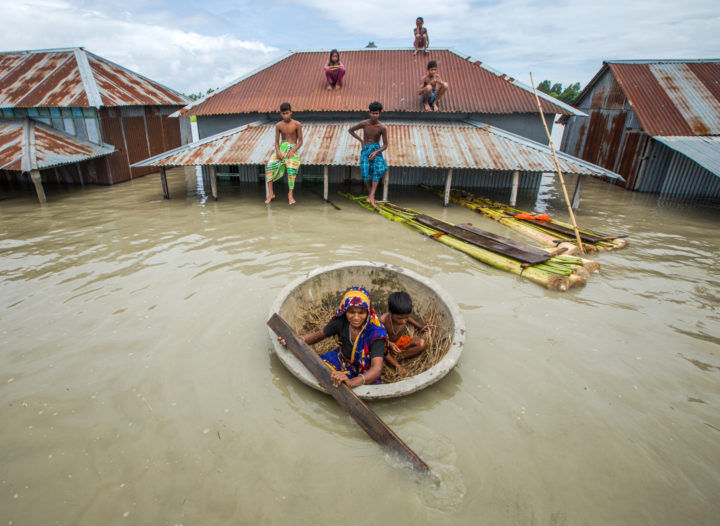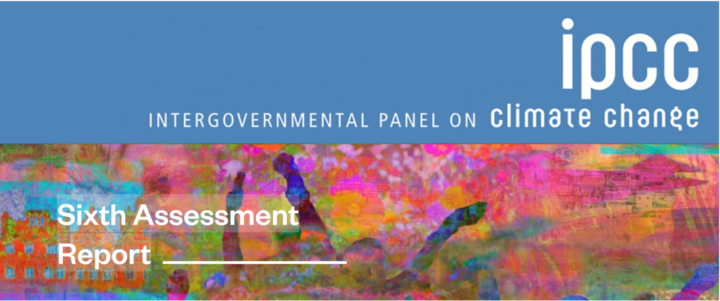IPCC: final warning for a critical decade
The IPCC's sixth assessment warns we're running out of time to keep to 1.5°, but we have all the tools we need to get on track for net zero in time.

By Gareth Redmond-King
@gredmond76Share
Last updated:
The IPCC’s recent reports have been dubbed a ‘code red for humanity’ and an ‘atlas of human suffering’. But they also show us that the world has the technologies we need to keep warming to 1.5°C, and that the economic benefits and avoided costs far outweigh the price tag for acting in time.
The Intergovernmental Panel on Climate Change (IPCC) has just published the final summary of its sixth assessment report. This is a comprehensive overview of where the world is on climate change right now, and it updates their last assessment, published in 2014.
The ‘synthesis report’ is deceptively short for the weight and depth of research that it represents. Hundreds of scientists from all over the world have contributed to the ‘working group’ reports that sit behind this short summary, not to mention ground-breaking special reports on 1.5°C (unpacking the warming target set in the Paris Agreement), on climate and land, and on the oceans and cryosphere (the icy bits of the world).
It is, says UN Secretary General Antonio Guterres, a “clarion call to massively fast-track climate efforts” saying “our world needs action on all fronts: everything everywhere, all at once.”
Report a guiding light in a critical decade
We are three years into a critical decade for tackling climate change – one in which the IPCC has already made clear the world must nearly halve its greenhouse gas emissions. With the next assessment not likely until the end of the decade, the IPCC’s messages in this report will be the guiding light for global talks and action to protect our planet from the devastating 2.8°C of warming we’re currently on track for.
The science is unequivocal (and the report does use that word) that humans have raised global temperatures by 1.1°C already. The effects of that are devastating. Nearly half the global population live in places highly vulnerable to climate impacts. Impacts are worse than expected – and will worsen further as we warm. Extremes of heat and cold, violent hurricanes, storms and cyclones, fires and floods all threaten lives, livelihoods and all living things. The loss and damage they cause hit the poorest hardest, and the richest – countries and households – are the biggest drivers of the climate-harming emissions.

Four-fifths of emissions come from coal, oil, and gas
The science underpinning the IPCC report is clear on the cause: coal, oil and gas. In 2019, the burning of these fossil fuels accounted for four fifths of the carbon dioxide emitted. If we want to stand a hope of keeping warming to the Paris threshold of 1.5°C, suggests the IPCC evidence, then our use of coal must all but end by mid-century, with oil and gas not far behind – cut by two-thirds ahead of 2050. To achieve this, the IPCC say, we need to phase out fossil fuel subsidy – by 10% this decade. To carry on as now, with all existing and planned fossil fuel infrastructure, will see us blow past 1.5°C swiftly and soon.
These are not demands on protestors’ placards; they are the conclusion of the world’s climate scientists. But more – the I in IPCC means ‘inter-governmental’. The IPCC’s reports are not submitted to governments to pop on a shelf and worry about later. They are agreed, line-by-line, by the world’s governments. They are signed-off and adopted by all the nations party to the Paris Agreement’s goal of keeping temperature rises to 1.5°C.
Borders offer no protection: global import and export
One of the points that those governments have agreed and signed off is the warning that their borders offer no protection. Supply chains and flows of natural resources are global. The UK imports half of our food. As we’ve seen in recent months, even the bulk that comes from neighbouring countries like Spain is vulnerable to extreme weather. But the fifth of our food imports that come from further afield are even more exposed to drought or flood. Take rice, for example. In 2020, we imported just over half a billion pounds’ worth of rice, a third of which came from India, and a fifth of it from Pakistan. Whilst India’s rice production has held up, even as other crops have been hit by extreme heat, Pakistan lost around 10% of its rice harvest last year in devastating floods.

Cut emissions, and adapt to impacts
Whilst it is clear from the IPCC that we must cut emissions to avert the worse extremes of future climate change, the scientists are equally clear we already need to adapt to climate impacts. That means shoring up our infrastructure to withstand extremes of weather, floods and fires. And it means changing how we grow food, how we get water to crops, and how we protect and enhance soils and other natural systems essential to the land’s productivity.
We can afford that here in the UK, although we are still behind where we need to be, according to the government’s climate advisers. But poorer nations often cannot, lacking both the finance and the technological expertise to avoid the effects of drought, for example. Which is also where we come in, in helping with the necessary finance – overseas development assistance (ODA), UK export finance (to help British businesses to invest abroad), and funding to recover from the loss and damage caused by climate impacts. As one of the world’s wealthiest nations, if the UK can’t be part of supporting poorer nations, then it’s hard to see who should be doing it in our stead. But as around half of the food we import from overseas comes from areas vulnerable to climate impact, it is also resolutely in our national security interest to help those places to adapt to a warmer world.
Net zero solutions and benefits already exist
But lest it seem as though the IPCC is all about the scale of the problem, and the size of the threat, the assessment report is also a lot about the solutions. We have almost all of the solutions we need to halve emissions this decade. Not only that, but with costs of clean tech falling, and global markets clamouring for them, the economic benefits and savings far outweigh the costs.
Here in the UK, ECIU and the CBI Economics recently calculated that net zero is worth over £70 billion a year to the UK economy – responsible for more than 800,000 jobs. When doing the right thing has been shown to be positive for jobs and growth, good for nature and wildlife, essential to secure food supplies, and central to averting the worst impacts warned about by the IPCC, it becomes hard to see why we would not act in time. And as the EU and US race to the top in subsidising clean tech, we risk losing out economically if we do not.